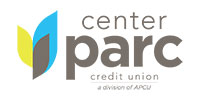
Did you know that homeowners can use the equity in their home to borrow money for just about anything? And, because the loan is secured with collateral (the home) the rates are usually much better than traditional personal loans or credit cards because the risk to financial institution is reduced. Home Equity Loans and Home Equity Lines of Credit (HELOC) are two great ways to leverage your home’s equity.
Before we compare Home Equity Loans and HELOCs, it is important to define what home equity actually is, and how you can leverage it to borrow money by using your home as collateral. First of all, when you purchase a new home, the price you pay is based on the fair market value of the property during the purchase. Over time the fair market value will fluctuate based on supply and demand, as well as other factors. If demand is high and there are not a lot of properties for sale in your market, then the fair market value will increase.
A home equity loan or HELOC will allow you to tap into your home’s built-up equity, which is the difference between the amount that your home could be sold for (fair market value) and the amount that you still owe. Homeowners often use a home-equity loan or HELOC for home improvements, to pay for a new car, or to finance their child’s college education because the interest rate is usually low and the interest paid, in some cases, may be tax-deductible.
You need to remember that these types of loans are secured by your home’s equity, so if you default on the loan, the financial institution may foreclose on your house. These types of loans are also sometimes referred to as a second mortgage or borrowing against your home. Keep in mind, home equity loans extract value from your home, but also add to your total debt owed on the home.
So, if you have equity in your home, you’ll have to determine whether to take out a:
- Home Equity Loan: Where the loan is distributed in a lump sum and has a fixed rate with
the same interest rate for the life of the loan. - HELOC: Where you can withdraw money as you need it, pay it back, then withdraw it again.
How do Home Equity Loans and HELOCs work?
- A home equity loan is predictable because it a one-time loan that you repay with fixed payments over a certain number of years and it is typically used for larger purchases – such as home improvements or repairs. Most people like a home equity loan because it is a set payment at a lower rate over a known period of time.
- A HELOC is flexible and typically features a variable-rate that allows you to borrow (withdraw) money and repay it repeatedly as you need it over a set period of time – this is often referred to as a “line of credit”. Most HELOCs will have a draw period (when you can borrow funds and pay it back to borrow again later) followed by a repayment period when regular payments are made to pay off the borrowed funds, but there are no longer any withdrawals allowed.
Keep in mind that lenders limit how much you can borrow with both home equity loans and HELOCs. In most cases, you can borrow up to 85 percent of your home’s value—including any existing debt on the property. Some lenders allow you to borrow more, but interest rates and costs rise as you borrow more. It’s a good rule of thumb, to keep your loan-to-value (LTV) ratio below 80 percent for the best loan terms.
To learn more about this topic, please visit our sponsors, Atlanta Postal Credit Union or Center Parc Credit Union– they’ll be happy to help with your specific questions regarding Home Equity Loans and HELOCs.










